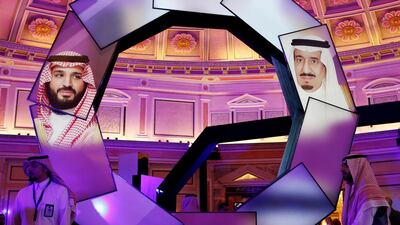What is Vision 2030?
Crown Prince Mohammed bin Salman announced Saudi Arabia's Vision 2030 in 2016, a huge economic reform plan that has set the kingdom on a course of rapid transformation that aims to diversify the Arabian Gulf’s largest economy away from oil. Saudi Arabia is endeavouring to do this by boosting the private sector, opening up its economy and reducing red tape to attract foreign direct investment, reducing unemployment and rapidly modernising the country through social and economic policy reform.
What are its priorities?
At its core, the plan calls for increasing non-oil revenue more than threefold to 600 billion Saudi riyals (Dh587.6bn) by 2020 and fivefold, to 1 trillion riyals, by 2030, up from 163.5bn riyals in 2015. Vision 2030 also calls for transforming the Public Investment Fund, the kingdom’s sovereign wealth fund, to the largest in the world through the proceeds of partially privatising the state oil company, Saudi Aramco.
Other targets include the localisation of oil and gas sectors from 40 per cent in 2015 to 75 per cent by 2030. To that end, the In-Kingdom Total Value Add programme, an Aramco programme launched in December 2015, requires all of its suppliers to aim to attain 70 per cent local content and export 30 per cent of locally manufactured energy goods and services by 2021 to build a competitive local supply chain.
Saudi Arabia also plans to spend 100bn riyals in 2019 and 2020 as part of a vast new industrial strategy it calls the National Industrial Development and Logistics Programme (NIDLP) that targets 1.6 million new jobs and aims to attract as much as 1.6tn riyals in investment by 2030.
The country is looking also to minimise bureaucracy for businesses to set up and is aiming for banks and other lenders to allocate up to 20 per cent of overall funding to SMEs by 2030.
How will this affect Saudi households?
The kingdom is looking to improve the standard of living through targets to increase household spending on domestic cultural and entertainment activities from the 2015 level of 2.9 per cent to 6 per cent by 2020. Forty seven per cent of Saudi families already own their homes and the country aims to increase this rate by five percentage points by 2020. Other targets include lowering the rate of unemployment from 11.6 per cent to 7 per cent; increasing women's participation in the workforce from 22 per cent to one-third; and to up savings from 6 per cent to 10 per cent of total household income.

